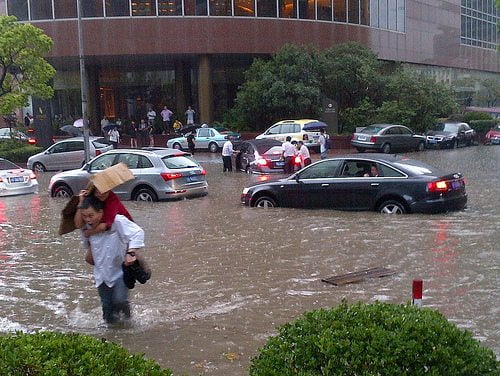

Environment
El Niño worsens economic damage from flooding, study finds
Africa, Australia, western US and parts of South America are among the world’s areas most at risk of the effects of El Niño Southern Oscillation (ENSO), which significantly worsens extreme weather and its economic impact.
Blue & Green Tomorrow is currently running a crowdfunder to ensure its survival. Please pledge.
ENSO is a climate pattern periodically occurring in South America that triggers a warming trend able to influence the weather, causing rainfall, droughts or cyclones. Its cooling correspondent is called La Niña.
Scientists have previously linked the phenomenon with rising greenhouse gas emissions, while also suggesting that its effects will be stronger in the future as global warming intensifies.
A new study published in the journal Proceedings of the National Academy of Sciences has tried to map the relationship between flood risk and the years in which El Niño and La Niña occurred.
Researchers found that some areas are affected by the phenomenon when it comes to flood intensity and that almost half the earth’s surface (44%) sees worse economic damage in El Niño and La Niña years.
The study’s abstract says, “Our results show that climate variability, especially from ENSO, should be incorporated into disaster-risk analyses and policies.
“Because ENSO has some predictive skill with lead times of several seasons, the findings suggest the possibility to develop probabilistic flood-risk projections, which could be used for improved disaster planning. The findings are also relevant in the context of climate change.”
However, some parts of the world are not – or are minimally – affected. But flood risk in vulnerable countries is likely to increase as the effects of climate change get stronger.
El Niño is likely to develop over the 2014 fall and winter, according to the Climate Prediction Center.
Photo: Stefan Krasowski via flickr
Further reading:
El Niño threatens food crop yields – but scientists can predict ‘bad years’
Rising carbon dioxide will amplify El Niño, say scientists
Half of 2012 extreme weather events linked to climate change, says study
70% probability of El Niño arriving this summer, say US climate forecasters
Climate change causes Australian temperatures to break records in 2013


 Environment10 months ago
Environment10 months agoAre Polymer Banknotes: an Eco-Friendly Trend or a Groundswell?

 Environment11 months ago
Environment11 months agoEco-Friendly Home Improvements: Top 7 Upgrades for 2025

 Features9 months ago
Features9 months agoEco-Friendly Cryptocurrencies: Sustainable Investment Choices

 Features10 months ago
Features10 months agoEco-Friendly Crypto Traders Must Find the Right Exchange





























